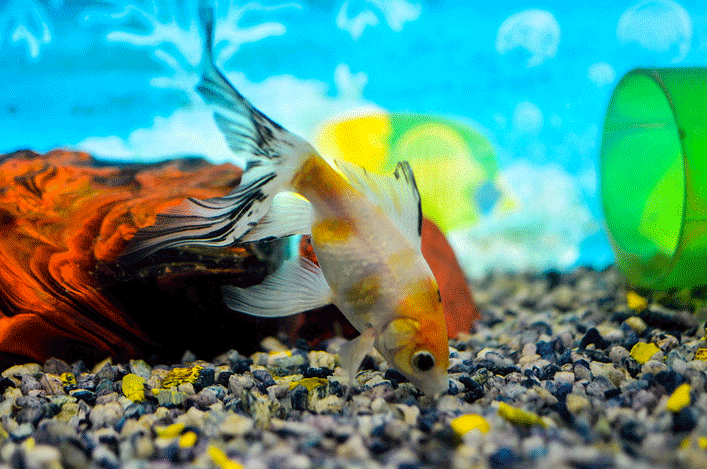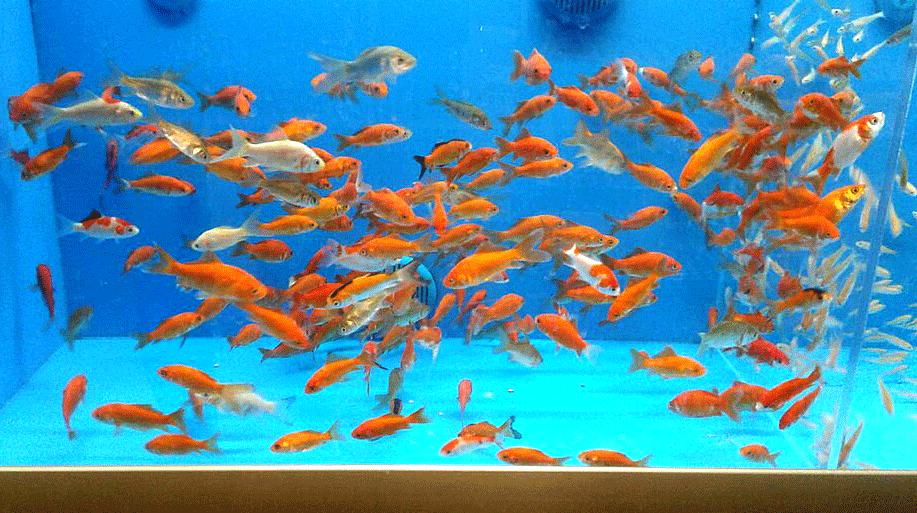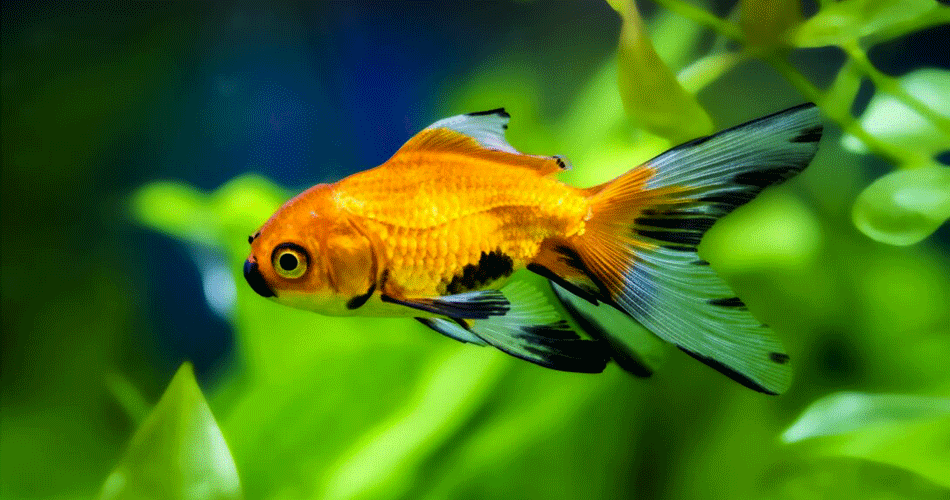Why is my goldfish turning black? Quick fix and prevention
Goldfish can change color due to various reasons. Goldfish are beautiful pets, known for their vibrant colors. Seeing your goldfish turn black can be alarming. There are several reasons why this change occurs, and understanding them is important for your fish’s health. It could be a natural process, a sign of illness, or a reaction to water conditions.
Knowing the cause helps in taking the right steps to care for your goldfish. We will explore the possible reasons why your goldfish is turning black and what you can do to address it. Keeping your goldfish healthy and happy is essential, and recognizing color changes is a part of that care.
Common Causes

Observing your goldfish turn black can be quite alarming. This change in color can be due to several factors. Understanding the common causes can help you address the issue effectively.
Water Quality Issues
Water quality plays a crucial role in your goldfish’s health. Poor water conditions can stress your fish. Stress can lead to color changes, including black spots. Regularly test your tank water. Ensure proper filtration and regular water changes. Keeping the water clean helps prevent many health problems.
Ammonia Burns
Ammonia is toxic to goldfish. High ammonia levels can cause burns on your fish’s skin. These burns often appear as black patches. Regularly check ammonia levels in the tank. Use water conditioners to neutralize ammonia. Remove uneaten food and waste promptly. This helps keep ammonia levels low.
Diet And Nutrition
Goldfish turning black can be alarming. While there are many causes for this change, diet and nutrition play a significant role. Ensuring your goldfish has a balanced diet is crucial for its health and vibrant color.
Nutritional Deficiencies
A poor diet can lead to nutritional deficiencies. If your goldfish lacks essential vitamins and minerals, it might start showing signs, like turning black.
Goldfish need a variety of nutrients to stay healthy. Make sure you provide food rich in vitamins A, C, and E.
Consider adding leafy greens and specialized fish foods that boost immune health. Have you checked the nutritional content of your goldfish’s food lately?
Food Quality

The quality of food you give your goldfish matters. Low-quality fish food can have fillers and lack essential nutrients.
Opt for reputable brands that focus on high-quality ingredients. Look for fish food that lists fish meal or shrimp meal as the first ingredient.
Avoid overfeeding as it can lead to poor water quality, affecting your goldfish’s health. Do you know how much your goldfish should eat daily?
Remember, a balanced diet and quality food are vital for maintaining your goldfish’s vibrant color. Is your goldfish getting the nutrition it needs?
Genetic Factors
Goldfish can change color due to various genetic factors. Sometimes, these changes are completely natural and expected. Understanding the genetic reasons behind color changes can help you know why your goldfish might be turning black.
Inherited Traits
Goldfish inherit traits from their parents. These traits include their color and patterns. If your goldfish’s parents had black spots or patches, your goldfish might develop similar traits.
Some goldfish are bred to have specific colors. These colors can change as they grow. Black patches may appear due to genes passed down from their ancestors.
Color Variations
Goldfish come in various colors. These colors can change over time. Genetic factors play a big role in these changes. Some goldfish have genes that cause them to turn black as they age.
The environment also affects these color changes. But the genetic makeup of the goldfish is the main reason. If your goldfish is turning black, it might be due to its genetic code.
Disease And Infection
Seeing your goldfish turn black can be alarming. Disease and infection are common reasons for this color change. Identifying the root cause is crucial for treating your pet. Understanding the types of infections will help you take the right action.
Bacterial Infections
Bacterial infections in goldfish can be serious. Dirty water often causes these infections. The bacteria enter through wounds or gills. Your fish may develop black patches as a reaction. Other symptoms include lethargy and loss of appetite. Quick treatment is key to prevent further harm.
Fungal Infections
Fungal infections also affect goldfish. These infections often appear as white, cotton-like growths. Left untreated, they can cause black spots. Poor water quality and stress are common causes. Keeping the tank clean helps prevent fungal growth. Early detection and treatment are vital for recovery.
Environmental Stress
Goldfish turning black can be alarming. Environmental stress is a common cause. This stress can come from various factors within your goldfish’s tank. Let’s explore two major contributors to environmental stress: Tank Overcrowding and Improper Temperature.
Tank Overcrowding

Overcrowding the tank stresses goldfish. They need space to swim freely. Too many fish in a small tank can lead to poor water quality. This can cause ammonia levels to rise. High ammonia levels harm fish. It can cause their skin to turn black.
Provide enough space for each goldfish. A single goldfish needs at least 20 gallons of water. This helps maintain good water quality. It also reduces stress and the risk of turning black.
Improper Temperature
Goldfish need a stable water temperature. Sudden changes can stress them. The ideal temperature range for goldfish is 68-74 degrees Fahrenheit. If the water is too cold or too warm, it can cause stress. Stress can lead to black spots on their skin.
Use a reliable aquarium heater to maintain a steady temperature. Monitor the water temperature regularly. This ensures a stable environment for your goldfish. Keeping the temperature within the ideal range helps prevent stress. It also keeps your goldfish healthy and vibrant.
Natural Color Change
Goldfish can change color naturally due to various reasons. It might be surprising to see your goldfish turning black, but this is often a part of their natural color change process. Understanding why these changes occur can help you ensure your goldfish stays healthy.
Maturation Process
As goldfish mature, their colors can change. Young goldfish are often duller in color. As they grow, their scales may darken or change shades. This is a natural part of their development.
Genetics play a significant role in this process. Some goldfish are predisposed to darkening as they age. This color change is usually harmless and nothing to worry about.
Seasonal Changes
Goldfish can also change color with the seasons. During colder months, their colors might darken. This is due to changes in water temperature and light exposure.
In warmer months, goldfish might become lighter or more vibrant. Seasonal changes in their environment can trigger these natural color variations.
Preventive Measures

Goldfish can turn black due to poor water quality or stress. Regular water changes and balanced diet help prevent this. Keep the tank clean and monitor the fish’s health closely.
Goldfish are beloved pets that bring joy and color to our lives. So, it can be concerning if you notice your goldfish turning black. Fortunately, this change can often be prevented with some simple measures. Let’s explore how you can keep your goldfish healthy and vibrant.
Regular Water Testing
Regular water testing is crucial for maintaining a healthy environment for your goldfish. Poor water quality is a common reason why goldfish turn black. Test the water at least once a week using a reliable aquarium water test kit. Check for ammonia, nitrite, and nitrate levels, as these can be harmful to your fish. Keep the pH levels stable. Goldfish thrive in water with a pH between 7.0 and 7.4. Sudden changes can stress them out and lead to health issues.
Balanced Diet
A balanced diet is essential for the overall health of your goldfish. Poor nutrition can weaken their immune system and cause color changes. Feed your goldfish a variety of foods. Include high-quality pellets, fresh vegetables like peas, and occasional treats like brine shrimp. Avoid overfeeding. Excess food can pollute the water and cause health problems. Stick to feeding your goldfish small amounts once or twice a day. Taking these preventive measures can help you maintain a healthy and vibrant goldfish. Have you noticed any other unusual changes in your goldfish? Share your experiences and tips in the comments below!
When To Seek Help
Goldfish are generally hardy pets, but sometimes they show signs that something is wrong. If your goldfish is turning black, it might be a symptom of a more serious issue. Knowing when to seek help is crucial for your pet’s health and well-being.
Signs Of Severe Illness
Observing your goldfish closely can help you identify symptoms of severe illness. Look out for:
- Loss of appetite
- Unusual swimming patterns
- Clamped fins
- Red streaks or sores on the body
These signs, combined with the blackening of scales, could indicate a serious health problem. If you notice any of these symptoms, it’s time to take action.
Consulting A Veterinarian
When your goldfish shows signs of severe illness, consulting a veterinarian is essential. Not all vets specialize in fish, so look for an aquatic veterinarian. You can usually find one by asking at pet stores or searching online.
I remember my first goldfish, Bubbles, who turned black and started swimming erratically. A quick trip to the vet revealed a bacterial infection. The vet recommended a specific antibiotic, and Bubbles recovered within a week.
Don’t hesitate to seek professional advice. Early intervention can save your goldfish’s life and prevent suffering.
Frequently Asked Questions
What Do You Do When Your Goldfish Turns Black?
Check water quality and temperature. Ensure proper diet and tank conditions. Consult a vet if the black spots persist.
How Do You Fix Ammonia Burns On Goldfish?
Lower ammonia levels by changing water frequently. Add ammonia neutralizers to the tank. Ensure proper filtration. Treat goldfish with aquarium salt.
Why Do Goldfish Change Color To Black?
Goldfish change color to black due to stress, poor water quality, or genetic factors. Ensure clean water and a balanced diet for healthy fish.
Why Is My Fish Starting To Turn Black?
Your fish may turn black due to stress, poor water quality, or disease. Check tank conditions and consult a vet.
Blackening in goldfish can signal health issues or environmental changes. Regularly monitor water quality. Ensure a balanced diet for your goldfish. Stress can also cause color changes. Check for diseases or parasites. Address any issues promptly to keep your goldfish healthy.
Your goldfish’s color might return to normal with proper care. Consult a vet for persistent problems. Understanding these factors helps you maintain a thriving fish. Keep your goldfish’s environment clean and stress-free. This promotes better health and vibrant colors.






